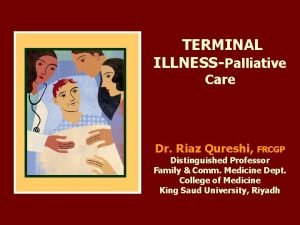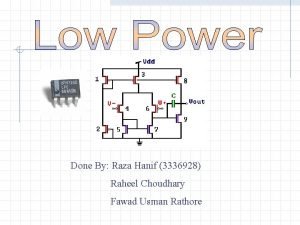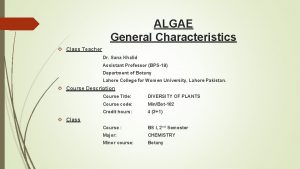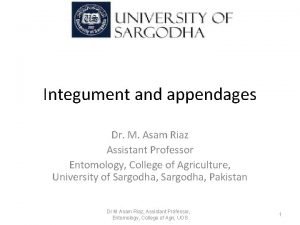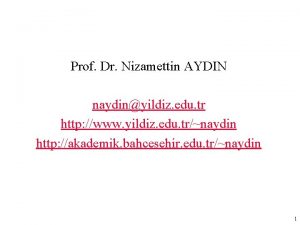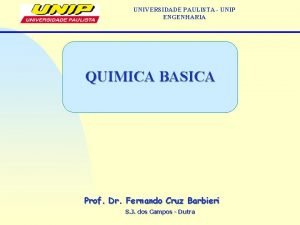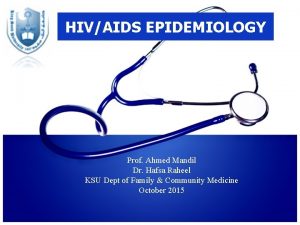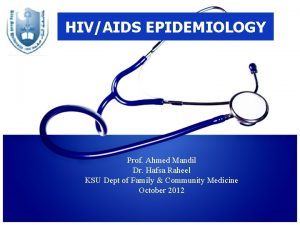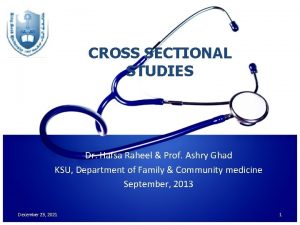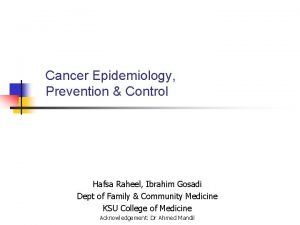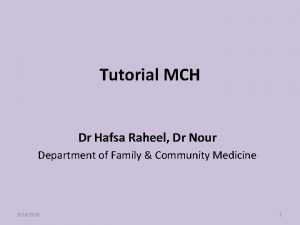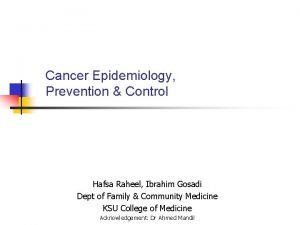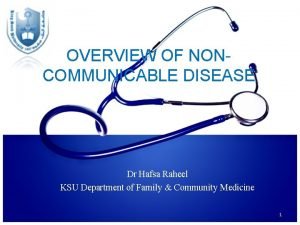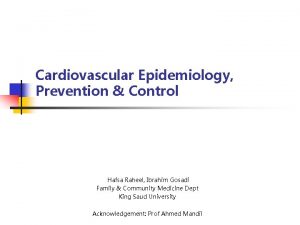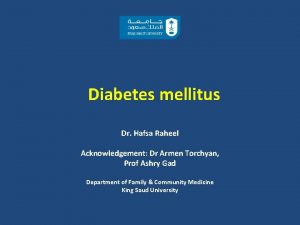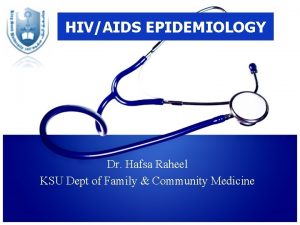9172020 Prof Riaz Qureshi Dr Hafsa Raheel How


















- Slides: 18

9/17/2020 Prof. Riaz Qureshi Dr Hafsa Raheel How to write an Introduction? Department of Family & Community Medicine King Saud University, Riyadh 1

2 9/17/2020 Objectives of the session -To know the basic structure for writing an introduction and the importance of each item -To understand the importance of attracting the attention of readers/ audience/journal editors -What to do and what not to do ?

Why bother writing a good introduction? The opening paragraph of your paper will provide your readers with their initial impressions of your argument, your writing style, and the overall quality of your work Your introduction is an important road map for the rest of your paper Ideally, your introduction should make your readers want to read your paper

What should an introduction do? 3 main things: Get your readers’ attention and interest Identify the specific topic of the report/ manuscript Conceptualize your argument or discussion

5 Introduction Before What beginning, consider: do I have to say? Why is it worth saying ? What is the right format for the message? What is the audience for the message ? Which journal are you aiming for? 9/17/2020

Skeleton of an introduction Background Importance of the topic Global, regional and local data (magnitude) Build up a convincing argument Objectives Hypothesis Rational

Strategies for writing an effective introduction Start by thinking about the question (or questions) you are trying to answer start off with a big picture sentence or two about the power of education as a force for change as a way of getting your reader interested and then focus in on the details of your argument Don’t be afraid to write a tentative introduction first and then change it later

8 9/17/2020 Introduction Why you have undertaken the study ? Main job of the introduction Set out to answer a question that really interests you The best question may arise directly from clinical practice Need for enhancing preventive aspect To build upon the current knowledge beliefs and practices To improve quality of life with rehabilitative concern Build on scientific work already published Make clear how your work adds importantly to what has gone before

9 9/17/2020 Introduction Keep it short Do not try to impress readers by summarizing every-thing that has gone before Choose references, which are relevant, recent (preferably last 5 – 8 yrs) Convince readers and editors that your study is better than previous studies A more detailed critique of the other studies can be left for the discussion

10 9/17/2020 Introduction Make sure that you are aware of earlier studies : Published Unpublished Currently underway (thesis, synopsis) Help from librarians Personal contacts with people who are experts in the subject

11 9/17/2020 Introduction Convince your readers of the importance of the question you are answering Do not repeat material, which is in all the textbooks Giving prevalence figures, data on hospital admissions and the cost to the nation related to the problem may be appropriate State the gaps in the literature on the topic you are covering and how you have tried to fill this gap by performing the present study?

12 Introduction Don’t baffle your audience Avoid introducing, without explanation, material that is completely unfamiliar to the reader or audience Avoid abbreviations as far as possible 9/17/2020

13 9/17/2020 Introduction Give the study’s design but not the conclusion A one sentence description of the study at the end of the introduction is appropriate. e. g We therefore conducted a double blind randomized study with 5 - year follow up to determine whether----

14 9/17/2020 Introduction Get the structure right: - General nature of the problem - Background and work to-date - The research question related to the objective (at the end) Stay away from opinionated statements and quotations in scientific paper

How to evaluate your introduction draft Ask a friend to read it and then tell you what he or she expects the paper will discuss If your friend is able to predict the rest of your paper accurately, you probably have a good introduction

16 9/17/2020 Conclusion While writing introduction Keep in mind your readers/audience Keep it short Tell readers why you have done the study Explain why it is important Convince them, using data from previous studies; the advantage or an upper edge of your study to what has been done before In the last paragraph of introduction provide the objectives of the research

References The writing center. University of North Carolina at Chapel Hill. http: //writingcenter. unc. edu/handouts/introductions / Visit York Centre for Academic Writing online resources at: http: //www. arts. yorku. ca/caw/resources. html Acknowledgements; Dr Riaz Qureshi, Proff of Family medicine, KSU

18 THANK YOU QUESTIONS? ? ? 9/17/2020
 Hafsa riaz
Hafsa riaz Dr riaz qureshi
Dr riaz qureshi 10 principles of family medicine
10 principles of family medicine Dr riaz qureshi
Dr riaz qureshi Raheel choudhary
Raheel choudhary Doç dr hafsa kesgin
Doç dr hafsa kesgin Raheel choudhary
Raheel choudhary Dr sana riaz
Dr sana riaz Durr-e-ajam riaz
Durr-e-ajam riaz Dr sana riaz
Dr sana riaz Uos16
Uos16 Xenial age range
Xenial age range Weerstand
Weerstand Samina qureshi md
Samina qureshi md Moin qureshi gatech
Moin qureshi gatech Prof dr vesile şentürk cankorur kimdir
Prof dr vesile şentürk cankorur kimdir Prof. dr. nizamettin aydin
Prof. dr. nizamettin aydin Engenharia química unip
Engenharia química unip Prof dr jayaprakash
Prof dr jayaprakash

